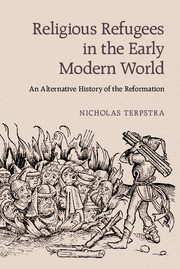Introduction
Published online by Cambridge University Press: 05 August 2015
Summary
One of the harshest realities of the modern world is the plight of refugees. War, brutal dictators, and inter-communal tensions regularly send tens of thousands fleeing for their lives over the nearest border. Race, ethnicity, and religious identity often provide the overt reasons for exile and expulsion. Some refugees settle in camps, hoping to return, while others keep moving from country to country in search of a new life. Families are torn apart, and those who choose not to flee risk being killed by armies, guerillas, or neighbours. The twentieth century saw millions killed, millions flee as refugees, and millions more forced to migrate when war destroyed their homelands. In 2014 the United Nations High Commission on Refugees estimated that the current global total of displaced peoples had risen beyond 50 million. Has it always been this way? When did refugees first become a common phenomenon, and why?
On the Move
European states began using exile and expulsion as deliberate tools of policy about six hundred years ago, in the period known as the late Middle Ages or Renaissance. This was when the religious refugee in particular became a mass phenomenon. Medieval traditions regarding purity, contagion, and purgation took a sharper definition in the fifteenth century. Political and economic realities deeply shaped the many cultural forces and historical events that then spurred institutional religious reformation in the sixteenth and seventeenth centuries. Towns, cities, and states had long been concerned with asserting their religious character and spiritual purity. As power began flowing towards monarchs and central governments, French king Henry IV's goal of “one faith, one law, one King” took hold across the continent. Those who fell outside this unity were not just alien, but also impure and possibly contagious. Any society that took its responsibilities to God seriously might have to purge itself in order to purify its population and so maintain its own health.
- Type
- Chapter
- Information
- Religious Refugees in the Early Modern WorldAn Alternative History of the Reformation, pp. 1 - 20Publisher: Cambridge University PressPrint publication year: 2015



